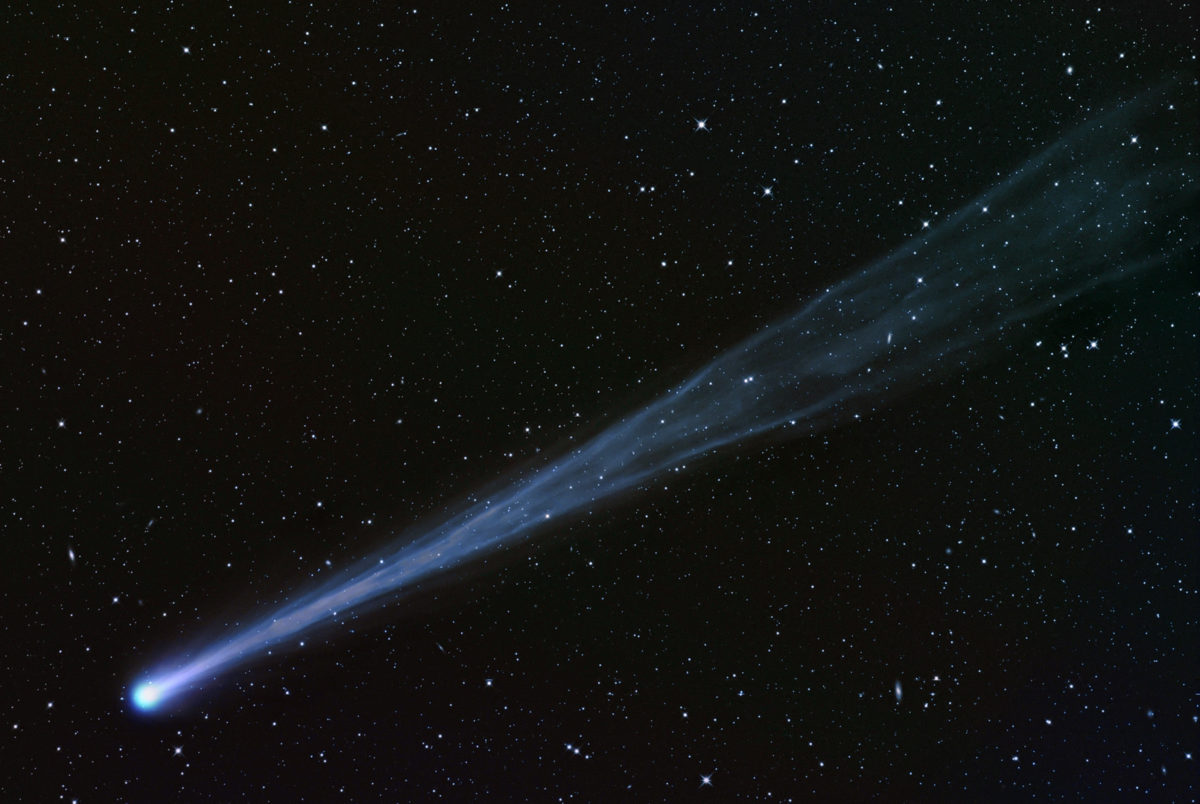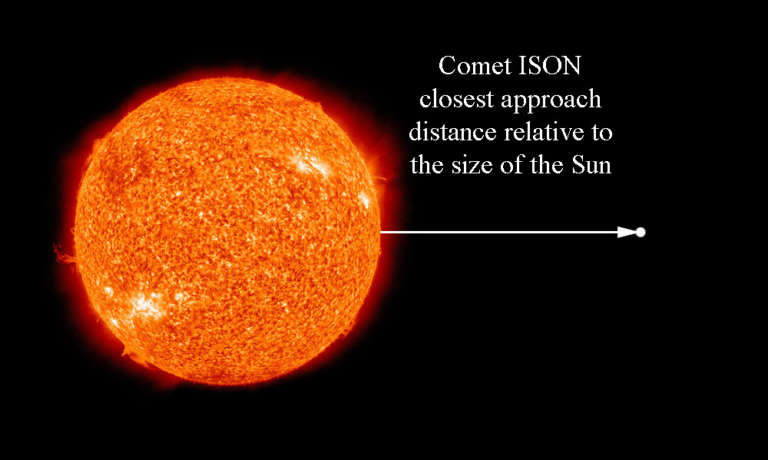Bruce Betts • Dec 05, 2013
Comet ISON Wrap Up
Comet ISON captivated our world, and many of our world’s robotic emissaries for many months. But, alas, poor ISON is dead—again. Here I wrap up our enthusiastic coverage of this multi-morphing zombie comet that tried to survive and re-survive as it came within one solar diameter of the Sun. I will try to answer pressing questions such as: what happened to it, why are some comets like opossums rather than cats, where can you find groovy videos, obituaries, and more about ISON?

What happened to Comet ISON (C/2012 S1) around perihelion (closest point to the Sun)? As NASA and ESA spacecraft designed to study the Sun observed it, ISON brightened, then began to fade and lose its head within a very few hours of perihelion. Then, it seemed to vanish completely close to perihelion. Between losing its head, and that pesky vanishing, many declared it dead. Then, it went undead: it re-appeared after perihelion and brightened. Wanting to get ahead of the game, I boldly declared it survived, or didn’t survive, or both.
It is now clear that Comet #ISON either survived or did not survive, or... maybe both. Hope that clarifies things.
— Dr. Bruce Betts (@RandomSpaceFact) November 29, 2013Experts such as Karl Battams of Naval Research Laboratory, who were tracking it carefully…agreed. The show Walking Dead briefly offered ISON a role on the cast. Battams and others dubbed ISON Schrodinger’s Comet, a reference to the disturbing modern physics concept of Schrodinger’s Cat. But, then ISON started being dubbed things like a comet smear, never a good sign. The comet then began a long and consistent fade which has seemed to indicate the comet’s demise. Karl even wrote an obituary, an expert nail in the coffin.

No, seriously, what happened to Comet ISON? Scientists are still working out the details, but the best estimate indicates its nucleus (the solid part as opposed to the dust and gas kicked off the nucleus) went ka-flooey (sorry about the technical terms) around the time of perihelion. What emerged as it rounded the Sun was probably the remnant of the nucleus, a cloud of dust. This remnant has been and is dispersing, and is not being replenished since there is probably no nucleus. So Comet ISON has kept fading and is now an ex-comet – probably. It is at the very least a mostly dead, mere shadow of its former self.
Discovered in September 2012 out by the orbit of Jupiter, and coming from the Oort cloud (way totally far out, man), this comet was likely pristine, dating from the dawn of the solar system, and possibly making its first and only trip towards the Sun. Its initial brightening led to the unfortunate misnomer in some media of “Comet of the Century” and claims were made it would be brighter than the Full Moon, or the blue dot in your eyes from a flash bulb on a dark night. But, the thing about comets, as has been often quoted and attributed to David Levy, is they are like cats: they have tails, but you never know what they will do. I now claim some, like ISON, are like opossums, with tendencies to play dead periodically. Or, maybe more accurately, since they have pretty tails instead of disgusting tails, comets are like a hybrid, like cat-possums. Throughout the last year of its life, ISON kept surprising people: brightening, fading, brightening, fading… you get the idea.
On to some pressing questions:
Will you be able to see it anymore? Not likely. Certainly not naked eye unless it really pulls one from the vampire playbook. Maybe the dust remnants will be visible in binoculars, but more likely you will need at least a good amateur telescope. The dust smear will be in the pre-dawn east. The Hubble Space Telescope is going to take one more shot at spying the debris in late December.
Has the debris’ orbit been massively altered and targeted at Earth so that bad hoodoo will happen? No. The debris still follows the same basic orbit leading it far from Earth.
How can I relive the glory and learn more? Check these out:
- Emily Lakdawalla’s super spiffy cool animations of spacecraft data around the time of perihelion AND discussions of how tricky it can be to interpret some things due to different geometries and things like forward scattering of light.
- Emily and my live ISON blog that, like ISON, is now mostly dead, but like ISON holds clues to a vast amount of knowledge, including links to lots of other sources, such as archived Google+ Hangouts (including ones with Emily) as well as the timeline around perihelion which shows how the perceptions kept changing.
- A collection of all our comet related blogs, updates, videos, etc. focused recently, not surprisingly, on Comet ISON.
- This coming Monday, Dec. 9, 2013, our Planetary Radio episode will feature a new interview with Karl Battams.
Let us not forget that ISON yielded some great science, a lot of surprises, and will continue to yield more science as all the data are analyzed. ISON was the most observed comet in history from spacecraft assets, and was even observed from spacecraft at Mars and Mercury. It was a rare, unprecedented combination of coming from the Oort cloud (so really, really old and pristine), being a sungrazer with a deathwish, and having a pretty good size (2 to 3 km nucleus before its unfortunate accident). As Karl Battams put it, “rather than mourn what we have lost, we should perhaps rejoice in what we have gained—some of the finest data in the history of cometary astronomy.”
Sure we won’t have the super nifty naked eye comet in December that we had hoped for, but let us also not forget that Comet ISON stirred public interest and a real-time public following like never before in comet-land. Thanks to that new fangled Internet and its social media stuff, the world experienced this comet in real time: its ups, its downs, and its surprises. And, for a comet that mostly got vaporized by the Sun, that is pretty cool.
Support our core enterprises
Your support powers our mission to explore worlds, find life, and defend Earth. You make all the difference when you make a gift. Give today!
Donate

 Explore Worlds
Explore Worlds Find Life
Find Life Defend Earth
Defend Earth

